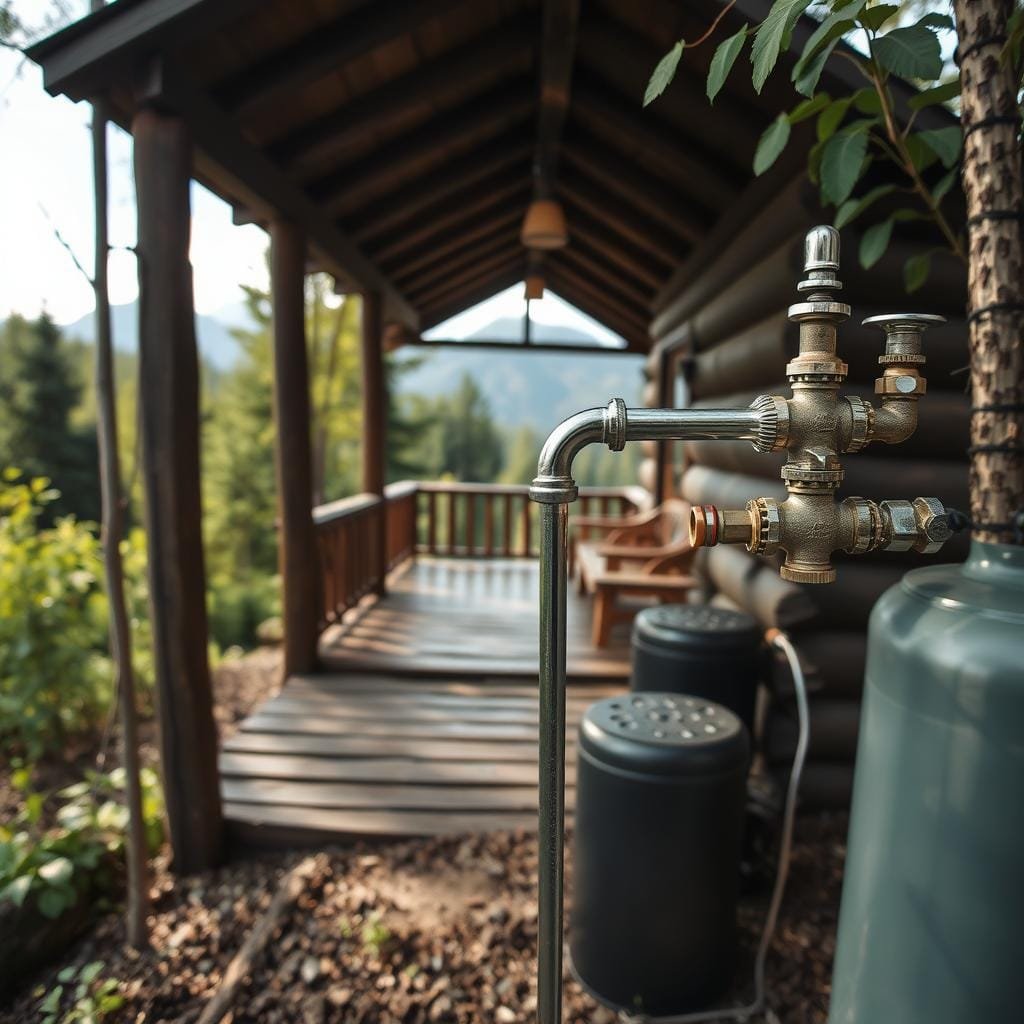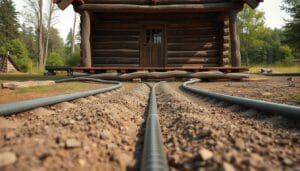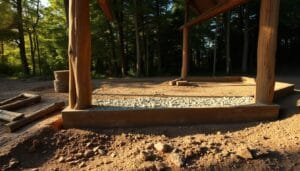Welcome to your go-to guide for securing a safe and reliable supply of drinking water at your remote retreat. Living away from municipal services presents a unique set of challenges, and having a trustworthy purification method is absolutely essential.
This guide is designed to walk you through the entire process. We start by helping you understand the quality of your specific source, whether it’s a well, spring, or surface collection.
You will discover detailed comparisons of top-rated systems that operate without any electricity. We focus on practical factors like flow rate, maintenance needs, and how well they remove various contaminants.
Our goal is to provide you with the knowledge to make a confident choice. A high-quality system is a fundamental investment for the health and safety of everyone who enjoys your cabin.
Identifying Off-Grid Water Challenges and Needs
Before investing in any equipment, the most critical step is to fully grasp the characteristics of your supply. The right choice depends entirely on your starting point.
Understanding Water Source Quality
Not all sources are created equal. Ground sources, like wells and springs, benefit from natural earth filtration. This process often provides a higher starting quality.
Deep wells typically offer more protection than shallow ones or springs. They draw from aquifers deep underground. However, they can still contain heavy metals or nitrates.
Surface supplies, like creeks, are completely exposed. Upstream activities or wildlife can introduce contaminants. This makes them the most challenging to purify effectively.
Professional testing is non-negotiable. It identifies specific contaminants present. This knowledge is power when selecting your purification method.
| Source Type | Natural Protection Level | Common Contaminants |
|---|---|---|
| Deep Well | High | Heavy metals, nitrates, minerals |
| Spring / Shallow Well | Medium | Bacteria, viruses, surface runoff |
| Surface Water (Creek, Lake) | Low | Parasites, chemicals, animal waste |
Special Considerations for Remote Locations
Living off the grid adds another layer of complexity. Access to replacement parts or professional help can be limited.
Your system must be incredibly reliable and durable. It should function without electricity. Ease of maintenance with basic supplies is a huge advantage.
Consider your household’s daily needs for drinking and cooking. The system must produce enough clean liquid consistently. Understanding your source’s baseline quality directly influences these practical decisions.
best water filter for off-grid cabin
The ideal purification setup balances contaminant removal with practical considerations for daily use. Gravity-fed systems work perfectly for remote locations since they operate without electricity.
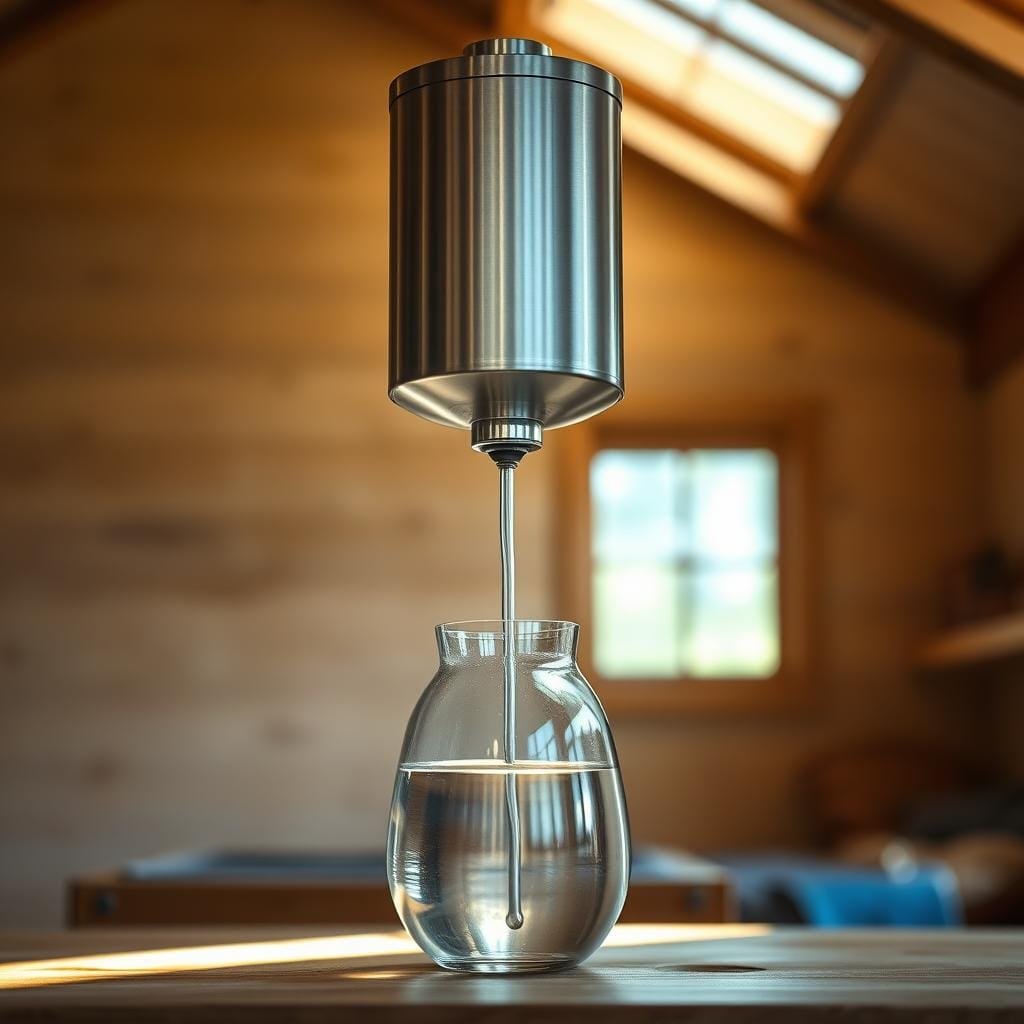
Essential Features to Consider
When evaluating purification options, focus on several key specifications. Flow rate determines how quickly you get clean liquid. A faster flow works better for families.
Filter capacity shows total gallons processed before replacement. This affects long-term costs and maintenance frequency. Durability matters greatly in isolated settings.
Contaminant removal capabilities vary between different filters. Some excel at removing bacteria, while others target heavy metals. Match the filter’s strengths to your specific needs.
Comparing Top Models and Their Performance
Different models offer unique combinations of features. Stainless steel construction provides lasting reliability. Multiple filter elements can enhance purification quality.
Tank size influences how much ready-to-use liquid you have available. Larger capacities suit cooking needs and guest visits. Consider your household’s consumption patterns.
The right choice depends on your test results, usage habits, and budget. Balance initial investment against long-term replacement costs for the best value.
Product Roundup: Top Rated Off-Grid Water Filters
When it comes to reliable purification systems for remote living, several standout options have earned their reputation through proven performance. Each offers unique advantages in construction, filtration technology, and maintenance requirements.
Berkey Filters: Premium Quality and Performance
Texas-based Berkey systems represent the gold standard in gravity purification. Their Black Berkey filters utilize six different media types with microscopic pores. This advanced technology achieves exceptional contaminant removal.
The Big Berkey model holds 2.25 gallons and processes 3.75 gallons hourly. Two purification elements provide 6,000 total gallons of capacity. These systems effectively remove 99.9% of lead and other contaminants.
Aquacera, Doulton, and Alexapure Models at a Glance
Aquacera offers an affordable alternative featuring ceramic filters that naturally remove fluoride. Their Traveler XL model holds 1.5 gallons at a competitive price. Maintenance is simpler with no priming required.
Doulton brings 170 years of heritage to their stainless steel systems. While flow rates are slower, their ceramic filters provide reliable performance. Alexapure Pro appeals to the preparedness community with impressive 5,000-gallon capacity.
| Model | Capacity (Gallons) | Flow Rate (GPH) | Filter Lifespan | Starting Price |
|---|---|---|---|---|
| Big Berkey | 2.25 | 3.75 | 6,000 | $449 |
| Aquacera Traveler XL | 1.5 | 1.2 | Annual replacement | $129 |
| Doulton SS Gravity | 2.5 | 0.44 | 2,600 | $265 |
| Alexapure Pro | 2.25 | 2.0 | 5,000 | $279 |
All these water filters meet rigorous testing standards. The choice depends on your specific needs for flow speed, capacity, and budget considerations.
In-Depth Analysis of Off-Grid Filtration Technologies
Different purification approaches offer unique advantages depending on your quality and usage patterns. Understanding these technical details ensures you select the most effective system.
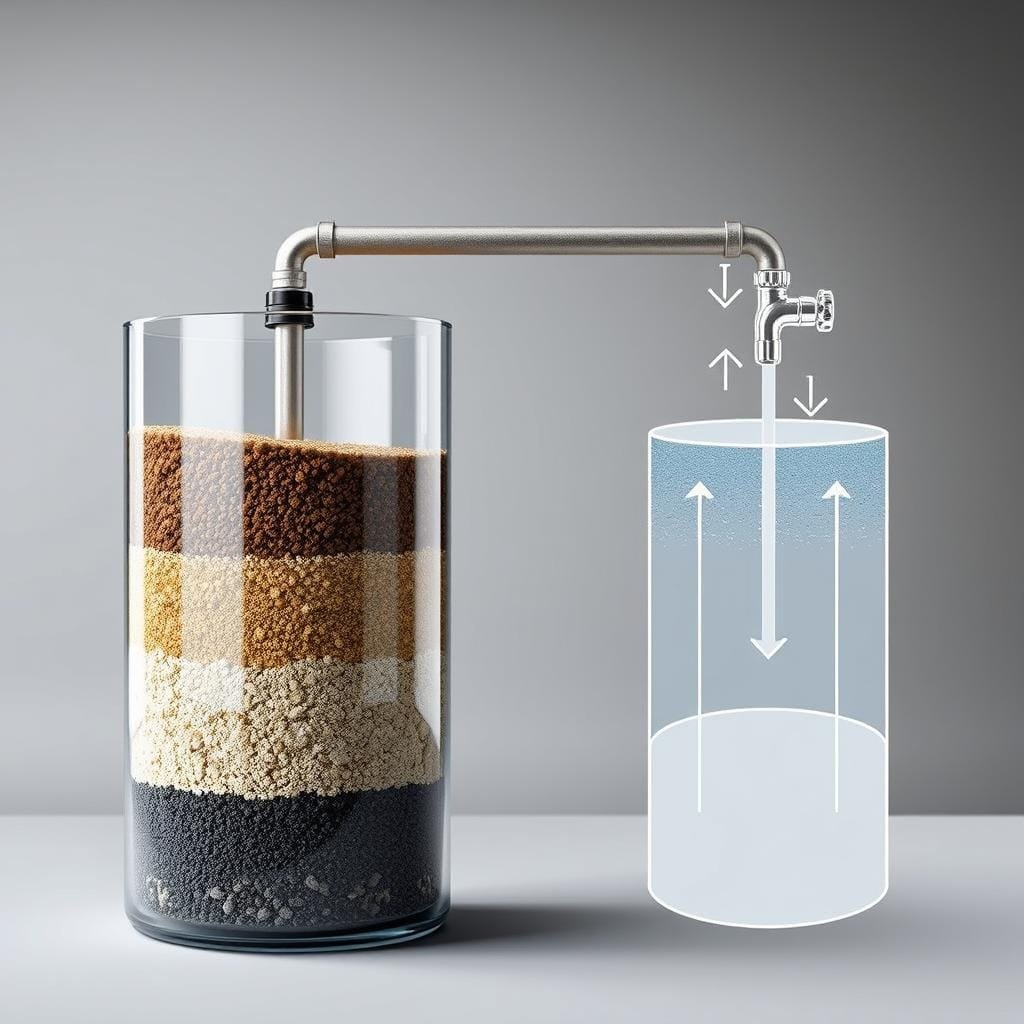
Gravity Filtration Explained
Countertop gravity filters operate without electricity. They use natural pressure to move liquid through purification elements.
Raw liquid enters the top chamber. Gravity pushes it through the filtration media. Clean drinking liquid collects in the lower chamber.
These systems typically contain 2-5 elements working together. Larger configurations can produce 15-25 gallons daily.
Ceramic Versus Stainless Steel Systems
Ceramic filters use microscopic pores to trap contaminants. Many include silver impregnation for additional protection.
Advanced multi-media filters combine different technologies. They create ionic barriers against various impurities.
Ceramic-only systems work well against microorganisms. Ceramic-plus-carbon setups also reduce chemical contaminants.
Flow Rate, Lifespan, and Lab Test Insights
Flow rates vary significantly between models. Some process 1.75 gallons per hour per element. Others manage only 0.33 gallons.
Lifespan claims range from 3,000 to 40,000 gallons. Actual performance depends on your specific quality.
Always review independent lab test results. They show true contaminant removal percentages. This data helps verify manufacturer claims.
For detailed comparisons of top-performing systems, check our comprehensive countertop gravity filters review.
Practical Tips for Installation and Maintenance
The real-world experience of using these systems involves two key phases: setup and maintenance. Getting both right ensures your household enjoys safe drinking liquid for years.
Proper care maximizes the lifespan of the filters used in your unit. It also guarantees they continue to effectively purify water.
Setup Strategies for Cabins and Remote Sites
Installation is wonderfully simple. Find a stable, level surface near your collection point. This avoids carrying heavy containers far.
Protect the unit from freezing temperatures. Ensure there’s enough vertical space to refill the top chamber easily. Some filters used require priming, while others, like Aquacera ceramics, do not.
Maintenance Best Practices for Long-Term Use
You’ll know it’s time for cleaning when the flow slows down. Based on personal experience, this happens every few months.
Ceramic elements get scrubbed with sandpaper. Other types, like Berkey filters, need a gentle scrub with a ScotchBrite pad. Always have a spare filter at your remote home.
| Maintenance Task | Frequency | Key Action |
|---|---|---|
| Filter Cleaning | Every 2-4 months | Scrub to restore flow rate |
| Water Quality Testing | Annually | Verify system effectiveness |
| Spare Filter Check | Bi-annually | Ensure availability |
Test your source before regular use. Comprehensive lab tests beat basic kits. Contact the manufacturer to confirm the unit can handle your specific issues.
Heavily contaminated sources may need more than a countertop system. Starting with better water quality makes home filtration much easier. For city water, you often need special elements to handle fluoride.
Wrapping Up Your Off-Grid Water Solutions
Your journey to finding the perfect gravity-fed solution ends with considering your household’s specific needs. All the systems we’ve reviewed meet rigorous safety standards, ensuring safe drinking water for your family.
The right choice balances price, flow rate, and contaminant removal. For premium performance, Berkey and Alexapure deliver exceptional lab results with efficient flow rates of several gallons per hour.
Budget-conscious households will appreciate Aquacera’s value. It meets the same standards with more affordable replacement filters. Avoid slower models unless specific circumstances require them.
For lead concerns, ProOne offers industry-leading removal. Systems needing fluoride reduction should consider Aquacera or Berkey with special elements.
Remember total ownership costs, not just initial price. These systems also provide emergency preparedness during power outages. Investing in quality purification brings peace of mind for years of reliable service.
